Dive into the exploration of biblical narratives to uncover the mysterious presence of white people in ancient texts.

Are White People Mentioned in the Bible
Wading into the waters of biblical history to understand the presence or absence of white people is akin to embarking on a journey through a dense, ancient forest, full of mystery and intrigue.
You might find yourself questioning how the concept of race was understood in antiquity and whether the descriptions of people in the Bible align with modern interpretations of ethnicity.
As you explore the historical context and the way figures are portrayed, you'll uncover insights that challenge contemporary perspectives on biblical races.
This journey promises to shed light on the complexities of interpreting ancient texts and the evolving understanding of race through the ages, leaving you eager to uncover more.
Key Takeaways
- The Bible emphasizes cultural and ethnic diversity over physical traits like skin color.
- Ancient texts, including the Bible, focus more on lineage, geography, and tribal affiliation than on race in the modern sense.
- Descriptions of people in the Bible are vague regarding ethnicity and skin color, making specific references to "white people" unlikely.
- Modern interpretations of biblical races are influenced by genetic research and historical documentation, rather than explicit textual references to skin color.
Understanding Biblical Context

To fully grasp references to racial or ethnic groups in the Bible, it's crucial to first understand the historical and geographical context in which these texts were written. The Bible, a collection of texts from different periods, doesn't explicitly categorize people by modern racial terms. Instead, it often refers to groups based on geographical location, tribal affiliation, or language. This approach reflects the ancient world's understanding of identity, which was heavily influenced by geographical factors and the evolution of language.
The ancient Near East, where most biblical narratives are set, was a melting pot of cultures, languages, and peoples. This region, spanning from the Nile Valley to the Mesopotamian plains, was a crossroads of civilizations. Geographical influences, such as trade routes and conquests, brought diverse groups into contact, leading to a complex tapestry of ethnic identities. These interactions also spurred language evolution, with Aramaic, Hebrew, and later Greek and Latin, serving as lingua francas at different times.
Understanding this context is key to analyzing biblical references to people groups. The texts reflect a world where identity was fluid, shaped by geographical and linguistic shifts rather than the rigid racial categories of modern times. When the Bible mentions groups such as the Hittites, Canaanites, or Edomites, it's referencing peoples defined more by their territorial or linguistic affiliations than by physical characteristics. Recognizing these nuances helps clarify the ancient authors' perspectives and intentions, providing a more accurate understanding of the biblical world and its people.
The Concept of Race in Antiquity
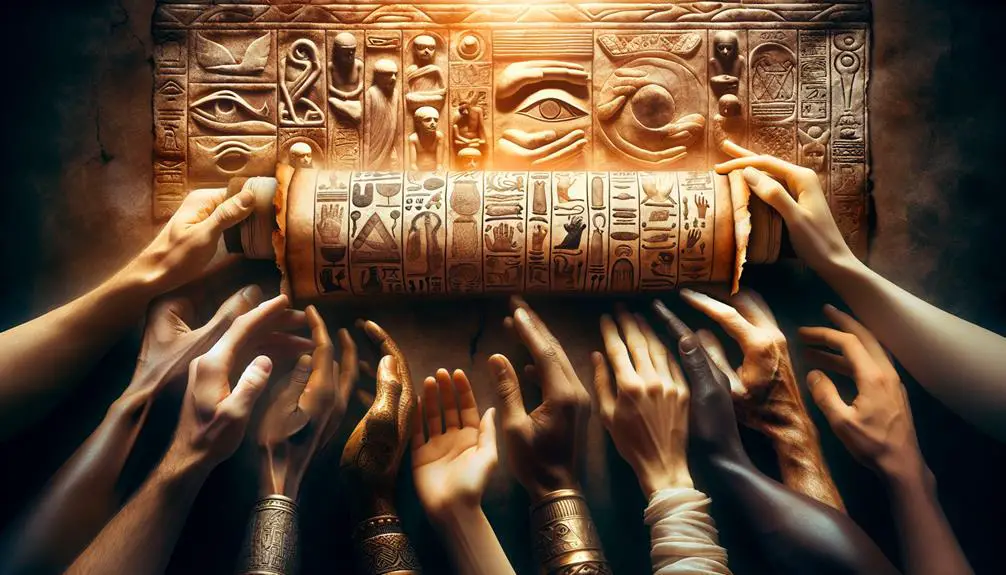
You'll find that perceptions of race in antiquity were markedly different from today's understanding. Ancient societies, including those of biblical times, categorized people more on the basis of ethnicity and tribal affiliation than on skin color.
This distinction impacts how you interpret references to various groups in the Bible.
Ancient Race Perceptions
Understanding ancient race perceptions requires recognizing that the concept of race, as it's known today, didn't exist in antiquity. People in ancient times didn't classify each other based on skin color in the same rigid, biological sense used in recent centuries.
Instead, distinctions were more likely drawn from culture, language, and perhaps, to a lesser extent, color symbolism and genetic ancestry. This doesn't mean they were completely blind to physical differences but that these differences didn't carry the same systematic, socio-political weight. Societies were more concerned with the lineage and the geographical origins of people rather than their melanin level.
Thus, ancient texts, including the Bible, reflect a vastly different framework for understanding human diversity than the modern race concept.
Ethnicity in Biblical Times
In biblical times, ethnicity rather than race determined social structures, guiding interactions among diverse groups within ancient societies. This perspective on human differences was largely shaped by geographic origins, language and dialects, religious practices, and tribal affiliations.
These factors played a crucial role in the cultural evolution of ancient communities, influencing everything from marriage alliances to trade agreements. Genetic research now supports the idea that ancient populations were more interconnected than previously thought, further blurring the lines of racial distinctions as understood today.
This underscores the complexity of human history, suggesting that ancient societies may have been more focused on cultural and ethnic differences than on skin color or other physical traits often associated with race in the modern world.
Descriptions of People in the Bible
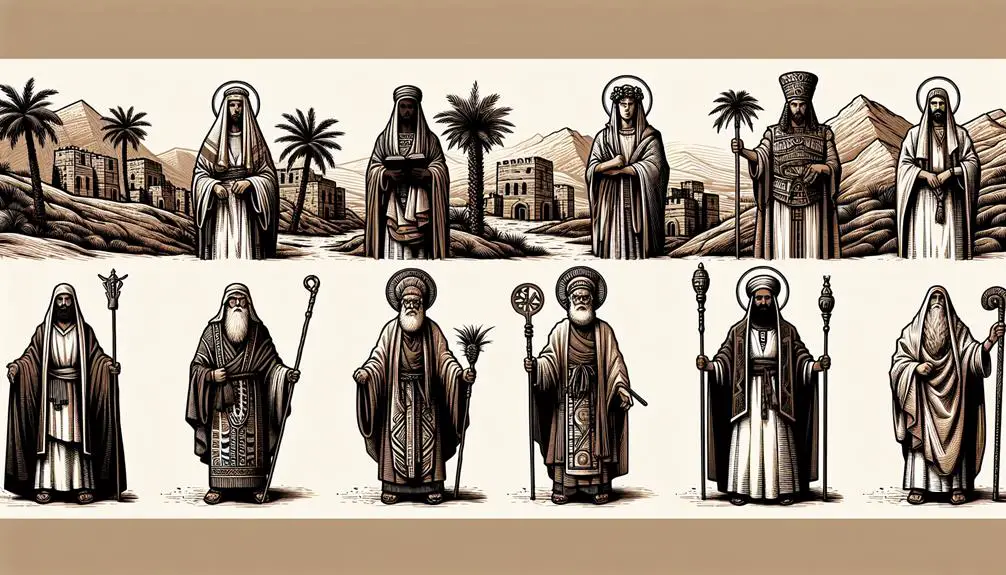
You'll find the Bible's text offers various descriptions of its characters, touching upon their ethnicity, skin color, and cultural identities. These references serve as a window into the diverse tapestry of human life captured in these ancient writings.
Biblical Figures' Ethnicity
The Bible's descriptions of its figures' ethnicities are often vague, leaving much to interpretation and scholarly analysis. You might find yourself wondering about the roots and appearances of biblical characters. Here's a brief overview:
- Genetic Research: Recent studies aim to shed light on the historical populations of the biblical regions, offering insights that challenge traditional views.
- Artistic Representations: Over centuries, artists have depicted biblical figures according to their own cultural and racial norms, which often diverge from historical accuracy.
- Cultural Context: Understanding the diverse cultures and peoples mentioned in the Bible helps in grasping the broader ethnic landscape.
- Archaeological Evidence: Discoveries continue to inform us about the physical appearances of ancient peoples, though direct connections to specific biblical figures remain speculative.
Skin Color References
Building on our understanding of biblical figures' ethnicities, it's crucial to explore how the Bible itself references skin color, offering insights into the appearances of its people. The scripture uses color symbolism and pigment interpretation sparingly yet significantly, painting a broader picture of diversity.
Reference |
Description |
|---|---|
Song of Solomon 1:5 |
"I am dark, but lovely…" – conveys beauty in dark skin. |
Lamentations 4:7-8 |
Describes a transition from purity to darkness due to suffering. |
Daniel 7:9 |
"His garment was white as snow…" – uses white to symbolize purity. |
Revelation 1:14-15 |
Describes hair and feet with color imagery, emphasizing divine qualities. |
Leviticus 13-14 |
Details on skin conditions, highlighting the importance of physical appearance and purity. |
This table illustrates the nuanced approach the Bible takes toward skin color and appearance, reflecting a complex understanding of identity and purity.
Cultural Identities Described
Delving into biblical narratives, one discovers that cultural identities are intricately portrayed, offering a window into the diverse world of ancient peoples.
You'll find:
- Religious practices that vary significantly, reflecting a tapestry of beliefs and rituals unique to each community.
- Geographical origins that play a pivotal role, influencing everything from diet to dialects.
- Cultural attire that serves as markers of identity, distinguishing one group from another.
- Social structures that outline the organization of societies, from patriarchal families to complex kingdoms.
These elements aren't just background details; they're essential for understanding the context in which Biblical events unfolded. They offer insights into how people lived, interacted, and viewed the world around them, making the ancient texts more relatable and the narratives richer.
Interpreting Ancient Texts
Interpreting ancient texts requires a nuanced understanding of the historical and cultural contexts in which they were written. When you delve into texts as old and significant as the Bible, you're entering a complex world of textual criticism and linguistic evolution. These fields of study help illuminate the meanings of texts that have been translated and transcribed through centuries.
Textual criticism involves examining the various copies of manuscripts to identify any alterations or errors that may have occurred over time. This is crucial because even minor changes can significantly affect the interpretation of a text. Linguistic evolution, on the other hand, looks at how languages change over time. Understanding the original language of a text, and how words and phrases might have shifted in meaning, is key to grasping its true message.
Below is a table that outlines some of the challenges and considerations involved in interpreting ancient texts, particularly with an eye toward identifying references to specific groups of people like white people in the Bible.
Challenge |
Consideration |
Impact on Interpretation |
|---|---|---|
Textual Variants |
Identifying authentic text |
Ensures accurate reading |
Linguistic Evolution |
Understanding original meanings |
Prevents modern misinterpretations |
Cultural Context |
Knowing historical backdrop |
Avoids anachronistic views |
Translation Bias |
Recognizing translators' influence |
Guards against skewed perspectives |
Historical Distance |
Bridging the gap in time |
Facilitates relevant application |
Interpreting ancient texts isn't just about reading words on a page; it's about reconstructing the world from which those words emerged. By applying careful analysis and scholarly methods, you gain insights that go beyond the surface, potentially challenging modern assumptions about ancient writings.
Historical Figures and Ethnicity
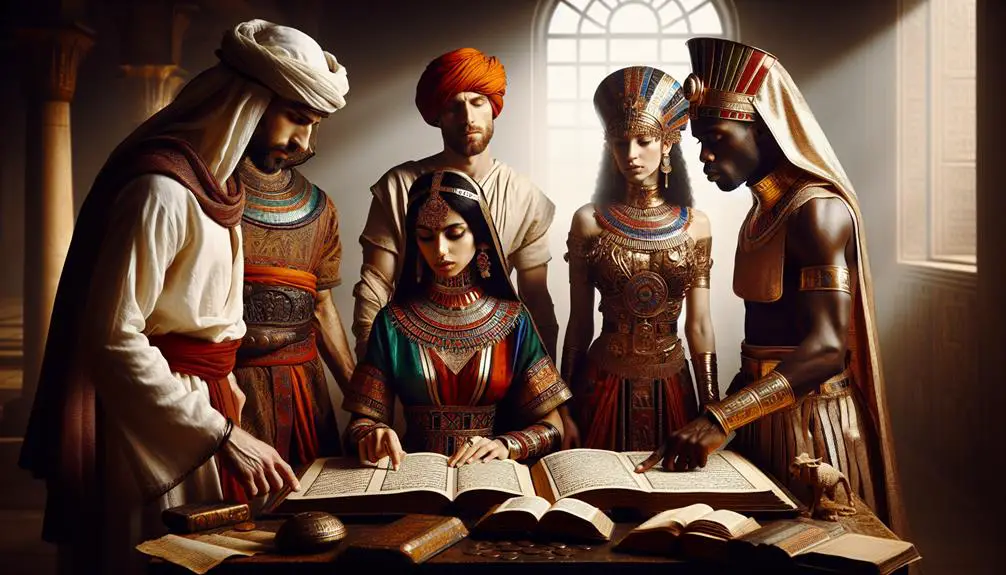
Exploring the ethnicity of historical figures within ancient texts, such as the Bible, necessitates a careful examination of the cultural and historical contexts in which these figures were described. You need to understand that genealogical accuracy and archaeological evidence play crucial roles in unraveling the ethnic backgrounds of these biblical characters.
To delve deeper, consider the following points:
- Genealogical Records: The Bible contains extensive genealogies. However, interpreting these lineages to determine ethnicity requires an understanding of ancient family structures and migrations. Genealogical accuracy is paramount, but it's also intertwined with the narrative and theological purposes of the biblical authors.
- Archaeological Evidence: Discoveries from archaeological sites can provide tangible evidence about the peoples mentioned in the Bible. This evidence, ranging from artifacts to burial practices, offers insights into the ethnic identities of historical figures.
- Cultural Context: Understanding the cultural context of the time is necessary. The Bible was written in a period when ethnic identities were fluid and often defined by factors other than skin color, such as tribe, language, and territory.
- Historical Documentation: Other historical documents from the same era can offer corroborative or contrasting evidence about the ethnicity of figures mentioned in the Bible. This includes writings from neighboring civilizations like the Egyptians, Babylonians, and Romans.
Modern Perspectives on Biblical Races
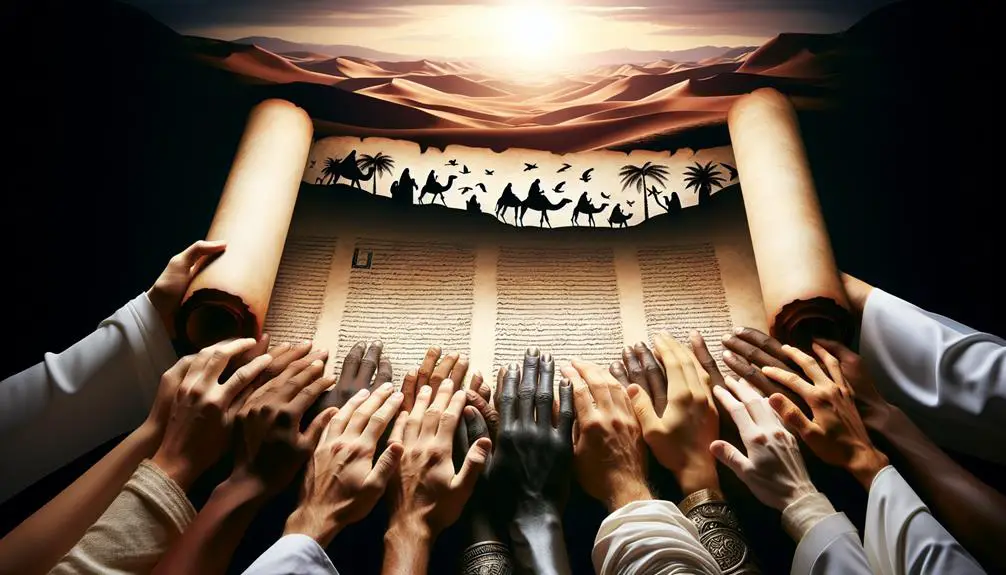
In modern discussions about biblical races, scholars and theologians often emphasize the complexity of defining ethnic identities within the historical and cultural context of the Bible. You'll find that the conversation has shifted from simplistic categorizations to a more nuanced understanding that incorporates genetic research and considers the social impact of these interpretations.
Genetic research has been pivotal in reshaping our understanding of ancient populations. As you delve deeper, you'll discover that this scientific approach has provided evidence that challenges traditional views on the racial makeup of biblical figures and societies. This research doesn't just add a layer of scientific insight; it also prompts a reevaluation of historical narratives, suggesting that the racial and ethnic identities of biblical times were far more intertwined and less distinct than previously thought.
Moreover, the social impact of these discussions can't be overstated. How you interpret the racial and ethnic backgrounds of biblical characters influences not only theological understandings but also cultural and racial perceptions today. It's crucial to recognize that these interpretations have the power to either bridge divides or deepen them, depending on the narratives that are emphasized.
In navigating these modern perspectives, it's important for you to approach biblical races with an openness to new insights provided by genetic research and a sensitivity to the social implications of these interpretations. This balanced approach allows for a more accurate and respectful understanding of the rich tapestry of identities that shaped the biblical world, and by extension, our own.
Frequently Asked Questions
How Have Modern Racial Theories Influenced the Interpretation of Biblical Characters' Ethnicities?
Modern racial theories have significantly influenced how you interpret biblical characters' ethnicities, often reflecting cultural biases rather than striving for historical accuracy.
You see, these theories sometimes project contemporary racial concepts onto ancient texts, skewing the understanding of these figures.
It's crucial for you to dissect these influences objectively, acknowledging how modern perspectives can distort ancient narratives and possibly detract from the text's original meanings and contexts.
What Role Does Archaeological Evidence Play in Understanding the Racial Identities of Biblical Figures?
You might think archaeological evidence doesn't clarify racial identities of biblical figures, but it plays a crucial role. Genetic studies and analysis of cultural practices shed light on the peoples described in ancient texts.
How Do Different Religious Traditions View the Concept of Race in the Context of Biblical Narratives?
You'll find that different religious traditions interpret the concept of race in biblical narratives uniquely, shaped by cultural interpretations and theological perspectives.
These views aren't monolithic; they vary widely even within the same faith tradition. Analyzing these interpretations offers a deep, objective understanding of how communities view their sacred texts and the figures within them.
This exploration highlights the complex relationship between faith, culture, and the perception of race throughout history.
Can Linguistic Analysis of the Original Biblical Texts Provide Insights Into the Racial Backgrounds of Certain Characters?
You'll find that delving into the nuances of original biblical texts can indeed shed light on the racial identities of its characters. Textual ambiguity often leaves room for interpretation, inviting you to consider the cultural context of these ancient narratives.
This analytical approach reveals how linguistic elements subtly inform us about diverse backgrounds, offering a richer understanding of the historical tapestry that shapes our perception of biblical figures and their stories.
How Have Depictions of Biblical Figures in Art and Media Influenced Contemporary Perceptions of Their Race or Ethnicity?
You've probably noticed how depictions of biblical figures in art and media have shaped contemporary views of their race or ethnicity.
These portrayals often involve cultural projections and artistic liberties, reflecting the creators' backgrounds rather than historical accuracy. This phenomenon skews public perception, leading many to imagine these figures in a way that aligns with modern racial constructs, rather than their historical and geographical realities.
It's a fascinating study of cultural influence and interpretation.
Conclusion
In wrapping up, it's crystal clear that the Bible isn't a straightforward roadmap to understanding race as we perceive it today. The ancient texts are a mosaic of humanity, not a black-and-white photo album.
Delving into the descriptions and ethnicities mentioned, it's like trying to find a needle in a haystack when it comes to pinpointing modern racial categories. Nonetheless, these ancient narratives offer a rich tapestry of human diversity, challenging us to view race through a broader, more inclusive lens.

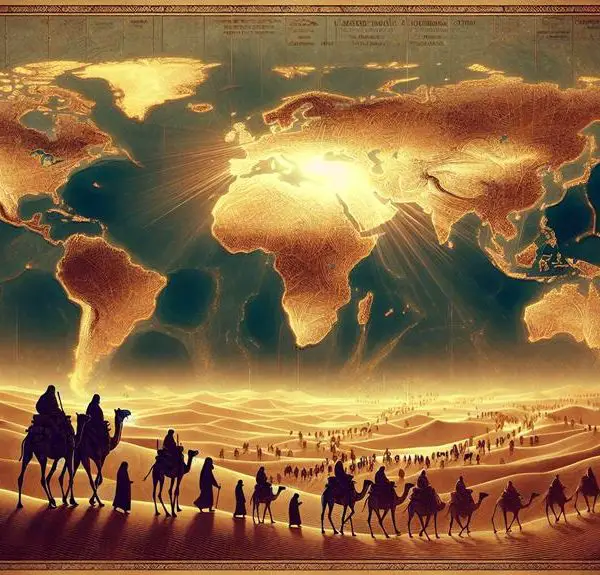
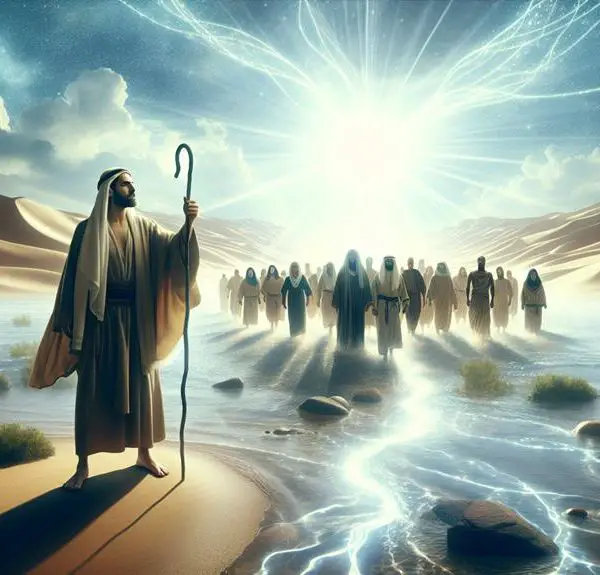
Sign up